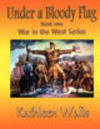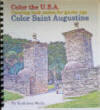
Book
Lovers
Get free books and insider scoops on new releases.
No spam.
Start with your free copy of
Musings: Authors do it Write!
|
Published 2-13-2021
We'd love to have you
share our stories on Social Media.
    |
'Keep your eyes on the prize and
hold on."
 The
first recorded European explorer to reach Mississippi was De
Soto in 1540. At the time Native Americans had been living
there for 12,000-years and three indigenous tribes had the
largest presence, the Chickasaw, Choctaw and Natchez. It was
Indians who gave the river and the state its name as the
'Father of Waters', 'Misi-ziibi". The native
inhabitants were displaced through unfair treaties
and oppression and in 1719 the French introduced a significant
number of slaves into the area. visitmississippi.org The
first recorded European explorer to reach Mississippi was De
Soto in 1540. At the time Native Americans had been living
there for 12,000-years and three indigenous tribes had the
largest presence, the Chickasaw, Choctaw and Natchez. It was
Indians who gave the river and the state its name as the
'Father of Waters', 'Misi-ziibi". The native
inhabitants were displaced through unfair treaties
and oppression and in 1719 the French introduced a significant
number of slaves into the area. visitmississippi.org

Jackson, Mississippi's capital, sits in the central portion of
the state on the Pearl River. A French trading post was
established there in 1792. By 1798 the territory had 4,500
whites and 2,400 blacks. Thirty years later a treaty allowed
white settlement, 2-years later it was named after Andrew
Jackson and it became the location of the state capital in
1821 because of its proximity to the Pearl River and the
Natchez Trace.

When Mississippi achieved statehood in 1817 it led the country
in cotton production because of their 'Petit Gulf' cotton.
They produced as much as 3,000-lbs per acre when the average
was 530-lbs. Increased production demanded an increased number
of enslaved and by the 1830s there were 200,000 slaves,
outnumbering the number of whites. At the onset of the Civil
War there were 353,901 whites and 436,631 slaves. Because of
the ever-present fear of insurrection the slave laws were
particularly harsh and the number of enslaved who were freed
was held to a minimum. In 1857 a law was enacted making
private emancipations illegal. The enslaved always practiced
subtle resistance by working slowly, breaking tools, feigning
sickness, etc.

At the start of the Civil War slavery was legal in 5 of the
county's 10 richest states and there were a total of
3,953,760 enslaved workers worth around
43-billion. Mississippi seceded from the Union on January 9,
1861. During the war it changed hands 9 times and suffered
significant damage and a July 1864 raid consisted of Federal
units including a black cavalry regiment.
 
The state sent approximately 80,000 white men into the war.
Black "Confederates" were issued a pension by Mississippi even
though there were no black combat troops, highlighted by the
fact that it was not until March 13, 1865 that the Confederate
Congress enacted a law permitting black men to serve in combat
but, '"nothing in this act shall be construed to authorize a
change in the relation which the said slaves shall bear toward
their owners'". Blacks served as noncombatant laborers, aid
workers, factory workers, transporters of goods and personal
servants to troops.

No state's policy toward the emancipated African Americans was
more shaped by prior history than Mississippi. Because of its
one-crop economy and the large number of African American
residents Mississippi's white population felt they had to
become even more controlling and coerce blacks into remaining
in poverty with no political power. These factors reached a
boil in 1955 with the murder of Emmett Till, a
14-year-old visitor from Chicago. He was beaten and murdered
in Money, Mississippi, a 75-lb fan tied around his neck and
thrown into the Tallahatchie River.
 
His death launched worldwide protests and made Mississippi the
site of a wave of activism that would change the country. Many
of the sites on the state's Civil Rights Trail are located in
Jackson. Follow this trail to understand how ordinary people
accomplished extraordinary things.civilrightstrail.com
The Jackson Civil Rights Movement Driving Tour consists of
80-sites over 4 neighborhoods. It includes homes, churches,
schools and event locations with 11 designated Freedom
Markers. It begins in the 19th-century 125-acre Farish Street
Historic District, once Mississippi's 'Black Mecca,'" at one of
CNN's 50 States 50 Spots to see, the Smith Robertson Museum
and Cultural Center. More than 1,000 artifacts are housed
here, the city's first public school for black children.

Tougaloo College was both a haven and a place to organize for
movement members. The college was founded in 1869 on what was
the Boddie Plantation. All of the great leaders, Hamer,
Baldwin, King, Evers, Bond, R. Kennedy, Bunche, Baez and
Rustin spoke from the podium in Woodworth Chapel. Students
departed from Woodworth to stage a read-in in Jackson Public
Library in 1961 where they were arrested. Cleman Library
houses important Civil Rights documents.
  
A life-sized statue of Medgar Evers stands in front of the
Medgar Evers Library a ½-mile from Medgar Evers Home Museum.
He purchased the house with a GI loan in 1957 and was
assassinated here on June 12, 1963. The activist and NAACP
Field Secretary arrived home at 12:20 AM after attending a
meeting at the New Jerusalem Baptist Church. Byron De La
Beckwith shot him from a honeysuckle bush 150-ft. away with a
1918 Enfield rifle. He died one hour later. Services were held
at Collins Funeral Home.
j
Twelve Mississippi Blues Trail Markers are placed around the
city in recognition of the city's contributions to
music. The 1949 Art Deco Alamo Theater, part of the 'Chitlin
Circuit'", is featured. It presented black films and
performers. It closed in 1983 and was restored and reopened in
1997. msbluestrail.org
 
The Museum of Mississippi History and the Mississippi Civil
Rights Museum are situated adjacent to one another connected
by a lobby. Together they present a complete picture of the
state's history through artifacts, dioramas, interactive
displays, audio, video and informational panels.
 
The Museum of History presents more than 15,000 years of
habitation through three chronological galleries on two
floors. The exhibit areas are, 13,000 BC-AD 1798,
1799-1865-Shaping A State and 1866- Present- Remaking Society.
Highlights of the museum are a 500-year-old dugout canoe and
an in-depth exploration of the Cotton Kingdom and 19th-century
slavery. The museum contains the world's largest collection
of Mississippi artifacts. mmh.mdah.ms.gov
       
The Mississippi Civil Rights Museum honors those who
participated in the 1945-1970 Civil Rights Movement in eight
interactive exhibits and I cannot recommend this museum highly
enough. The museum guides you from the close of the Civil War
to the current state in America. Galleries are built around an
area, This Little Light of Mine, that honors the activists
with music and features a light sculpture that increase in
brightness as more people enter the area. Creative theaters
are placed throughout the exhibits. Visitors can view videos
in a church, a police van and a jail cell. Other highlights
include films on Emmett Till, the slain Civil Rights workers
and Medgar Evers. On display is the actual rifle used to
assassinate Evers. The music of the movement plays during
the tour. mcrm.mdah.ms.gov

You can practice COVID protocols while interacting with
history. Stay safe and visit sites that matter.

We'd love your comments!
Renee Gordon has written a weekly travel column for the
Philadelphia Sun Newspaper for the past fifteen years and
has published articles on local, national and
international travel in numerous publications. Her columns
focus on cultural, historic and heritage tourism and her
areas of specialization are sites and attractions related
to African American and African Diaspora history. Renee
has been a guest radio commentator on various aspects of
tourism and appeared in a documentary, "The Red Summer of
1919". As an educator for thirty years she was an English
teacher, event and meeting planner, served as an
educational consultant and intern-teacher mentor. She
contributed to textbooks on women's history and classroom
management and has facilitated workshops on both subjects.
Renee considers herself a "missionary journalist" and as
such she continues to promote heritage and sustainable
tourism.
2013 Recipient of African Diaspora World Tourism Flame
Keeper in Media Award for Travel Writing
Affiliations
IABTW- International Association of Black Travel Writers
PBJ - Progressive Black Journalists
|
 |
The
Tenant from Hell
Book 1 in
the Realtor Mystery Series
Casey Clark,
property manager, is
just trying to evict
a bad tenant.
Instead she is over
her head in murder
and mayhem |
 |
Double
Duplicity
Book 2 in the Realtor Mystery
Series
Trouble follows
Casey like a raging
fire. |
 |
Missing--
Gone but not Forgotten
Based on the unsolved
abduction of a little girl in a
rural Florida community |
 |
Under
a Bloody Flag
Kansas and Missouri were a "no man's land" in the days before the War between the States.
|
 |
Under a Black Flag
Kansas and Missouri heated to the boiling point during the War between the States.
|
 |
For
Want of a Ship
John Roy came to New Orleans
looking for peace
instead he found a war. |
 |
Last Step
Last Step will keep
you on the edge of
your seat and leave
you gasping in
surprise at the
ending |
 |
Kudzu
Kudzu shows you
a different part of the South, past and present. Mystery with a touch of romance and a smidgen of paranormal.
|
 |
Wild about Florida:
South FL
The Everglades
swarm with wildlife
from birds, to
mammals, to
reptiles. Take a
boat ride into the
surrounding waters
of the Atlantic or
Gulf of Mexico, you
will find dolphins
dancing in your
wake. |
 |
Wild about Florida:
Central FL
Central Florida has
the ocean and gulf
beaches much like
other parts of
Florida but in many
other ways it is
distinct and unique.
The Florida scrub
jay, a bird many
Floridians believe
should be our state
bird, is found
nowhere else in the
world . |
 |
Wild About Florida:
North FL
Come explore caves,
hills, whitewater
falls and lots of
other fun things you
didn't expect to
find in Florida.
North Florida still
lets you enjoy the
sun and sand of Gulf
and ocean beaches,
but there is so much
more. The northern
counties are
different from their
southern and central
counterparts. |
 |
Georgia's
Ghostly Getaways
Who is not
fascinated by
mysterious things
that go bump in the
night? Who has never
wondered about that
thin line that
separates the living
from the dead? Are
there some places
where departed souls
still linger? |
 |
Hosts With
Ghosts
The
South has long been
famous for its
Southern
Hospitality. Hotels
throughout Dixie vie
with one another to
offer their guests
more service and
more amenities. They
strive to make each
visitor feel like a
cherished family
member instead of a
paying customer.
Many have guests
that never depart.
|
 |
Finding
Florida's Phantoms
Florida! The land of
sunshine and
wide-open beaches.
But even the
Sunshine State has
its dark secrets.
Places where
centuries old
spirits remain tied
to earth. Beneath
the facade of fun
and make believe
lurks the real
Florida. |
 |
Color Saint
Augustine
This is a way to
virtually visit
Saint Augustine.
It's a coloring book
for grown ups (but
kids will love it
too.) It's a spiral
bound, letter size
(8.5" x 11") book
with an actual photo
taken by me of one
of the attractions
in Saint Augustine.
The opposite page is
the same photo
converted into a
black and white line
image for you to to
color. It's 64 pages
with 30 photos and
30 pages for you to
color. On each photo
and each color page
there is a little
about the story of
the image . |
|
|
|
|
|
|
|
|
|
American Roads
and
Global Highways has so many great articles you
may want to search it for your favorite places
or new exciting destinations.

|





 The
first recorded European explorer to reach Mississippi was De
Soto in 1540. At the time Native Americans had been living
there for 12,000-years and three indigenous tribes had the
largest presence, the Chickasaw, Choctaw and Natchez. It was
Indians who gave the river and the state its name as the
'Father of Waters', 'Misi-ziibi". The native
inhabitants were displaced through unfair treaties
and oppression and in 1719 the French introduced a significant
number of slaves into the area.
The
first recorded European explorer to reach Mississippi was De
Soto in 1540. At the time Native Americans had been living
there for 12,000-years and three indigenous tribes had the
largest presence, the Chickasaw, Choctaw and Natchez. It was
Indians who gave the river and the state its name as the
'Father of Waters', 'Misi-ziibi". The native
inhabitants were displaced through unfair treaties
and oppression and in 1719 the French introduced a significant
number of slaves into the area. 









































